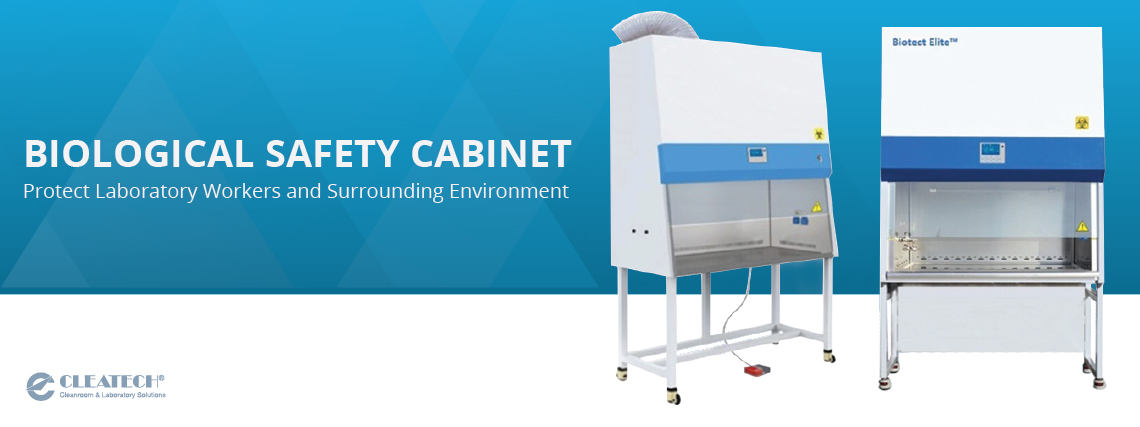Biological Safety Cabinet
Protect laboratory workers and the surrounding environment from pathogens with a Biosafety Cabinet (BSC). A HEPA filter helps remove harmful bacteria and viruses from all exhaust air exiting the biosafety cabinet. Biological safety cabinets also serve the purpose to maintain the sterility of material inside the enclosure. 90% of all Biosafety cabinets installed are Type A2.
Class II Cabinets provide protection to samples and the environment since harmful contaminants are removed by a HEPA filter. There are five types of Biosafety cabinets: Type A1, Type A2, Type B1, Type B2, and Type C1. Each type of cabinets requirements is outlined by NSF International Standard.
Fans mounted inside the cabinet pull air around the user and into the cabinet protecting the operator. The air travels underneath the work surface and pushed to the top of the unit where it passes through HEPA filters. After being filtered, sterile air is blown downward over products and material inside the enclosure to prevent contamination. Depending on the Type of Class II cabinet, filtered air can be exhausted through a HEPA filter back into the laboratory or pulled by an exhaust fume system where it is expelled from the building.
Type A2 cabinets do not require an exhaust fume system and air can be recirculated back into the enclosure and laboratory. These models typically have a minimum inflow velocity of 100 ft/min. A negative air pressure plenum surrounds all contaminated positive pressure plenums.
Type B2 Cabinets are typically found in toxicology laboratories. Since air is not recirculated back into the system, a Type B2 cabinet must be connected to an exhaust fume system to safely move hazardous fumes out of the building.
Cleatech offers two biosafety cabinet models, Class II Type A2 and Class II – Type B2. Available width is 3ft, 4ft, 5ft, and 6ft. Click here to see Biological Safety Cabinets specifications and prices.
Maintenance and Services
Proper maintenance of a biosafety cabinet assures effective use of the containment device. The life span of a HEPA filter will depend on the type of particles generated inside the biosafety cabinet. Changing the filter can be done after the cabinet has been decontaminated or a “bag-in/bag-out” procedure.
Changing the filter should be handled by a trained person as the filter is potentially contaminated.
Monitor Air Flow. As the filter load increases so does the amount of work needed by the internal fan to push the same volume of air through the filter. Newer cabinets measure air flow and self adjust the fan performance to ensure a steady volume of air moving through the unit.

